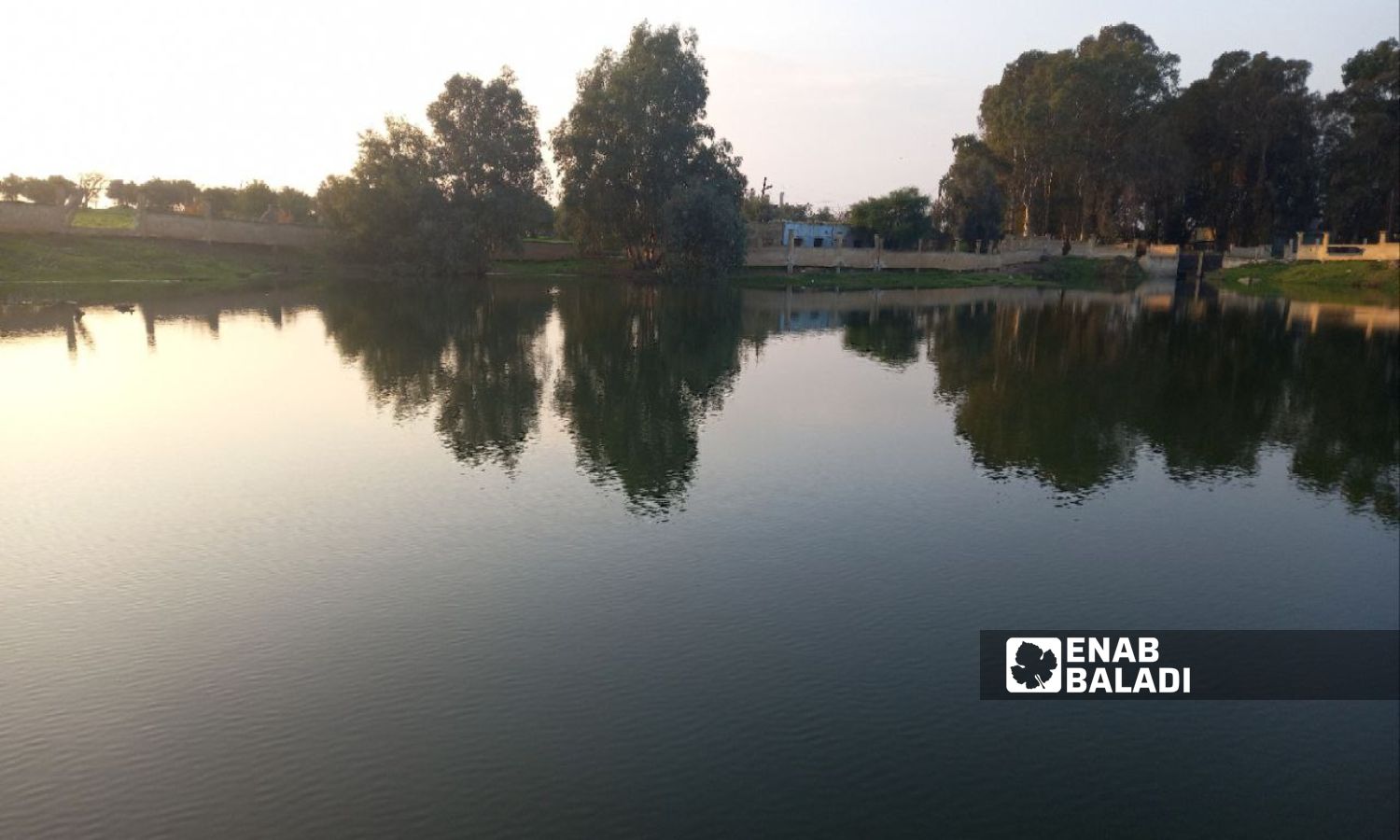



Daraa – Halim Muhammad
The resurgence of spring and lake waters in the western countryside of Daraa has alleviated the suffering of the residents from having to purchase drinking water, increased the storage levels in the dams of Daraa, and provided water for irrigation, saving on farmers’ water consumption.
Daraa province witnessed rainfall that exceeded 75% of the average, according to Daraa’s Agriculture Directorate, which led to the return of flow to the al-Abd springs in the village of al-Ajami in the western countryside. These springs supply the villages of al-Ajami, Amouria, and part of Zeyzoun with drinking water. The al-Sahkneh springs that supply the town of Tal Shihab, Khirbet Qais, and the town of al-Auja in the western countryside have also resumed their flow, as well as the water returning to Lake Zeyzoun. The waterfalls of Zeyzoun regained their natural charm at the beginning of the winter season.
Ghazwan al-Boush, the assistant director of water resources in Daraa, told the government newspaper Tishreen that rainfall had restored the al-Abd springs in the village of al-Ajami, where they had dried up in August 2023, and the directorate began supplying water to the residents of al-Ajami. The al-Sahkneh springs in Tal Shihab also resumed, serving nearly 20,000 people, as well as Lake Zeyzoun.
Al-Boush added that Lake al-Muzayrib has not returned to flow for two years, indicating a change in its flow direction.
As of the preparation of this report, the amount of rainfall reached three times that of the same time last year.
The director of Daraa Agriculture, Bassam al-Hashish, told the state-run newspaper al-Thawra that the average rainfall in the province reached 263.2 mm, compared to 74 mm for the same date in 2023, which witnessed a decrease in rainfall quantities.
Al-Hashish added that the rainfall amounts fell at the right time during the forty days of winter, which is when the crops need water, saving on later irrigation. Rainfall helps in the germination and watering of wheat, barley, fava beans, and peas, and prepares the ground for planting sesame and chickpeas. It also contributes to the abundance of pastures, saving on costs for livestock breeders.
With the return of the springs’ waters, the drinking water units resumed pumping water to the benefiting areas after they had stopped during the summer season.
Abdul Rahman (55 years old), a resident of Tal Shihab, told Enab Baladi that drinking water has returned to irrigate his neighborhood from the al-Sahkneh project in al-Fawar town after being cut off for about six months. He added that the return of the water saved him from having to purchase from mobile tankers, as he needed at least half a cubic meter per day because he owns a herd of livestock.
The price per meter of tanker water reached 20,000 Syrian pounds, meaning he was paying 10,000 Syrian pounds daily.
Mohammed Salah (30 years old), a water vendor in Tal Shihab, told Enab Baladi that after the return of the drinking water, the demand for its purchase decreased, and was limited to areas that were not supplied by networks or whose pipes were stolen or had illegal connections. He described the movement of water sales in areas where the springs have returned as weak.
The irrigation directorates in Daraa are pumping surplus water from lakes and springs to feed the dams, creating a water source that farmers can benefit from in summer.
An employee in the Directorate of Irrigation, who requested anonymity, told Enab Baladi that winter irrigation is designated for filling the dams, where farmers rely less on irrigation during this season, especially one witnessing heavy rainfall.
The employee added that the directorate recently maintained the pumps of al-Abd, Zeyzoun, and al-Sahkneh springs, and the stations began pumping water towards the dams.
According to Ahmad Mohsen, the director of water resources in Daraa, the storage levels in the dams of Daraa reached three times the storage quantities compared to the same period in 2023. He attributed the improved dam storage levels to the rainfall, which saved farmers from having to irrigate their crops, thus increasing the abundance of spring waters.
Mohsen added that the intensity of the rainfall led to the flow of torrents towards the dams, contributing to increased storage.
There are 16 dams in Daraa, including four in the eastern countryside of Daraa, one in the city of Daraa, four in the western countryside, and six in the northern countryside.
The total storage of the dams in Daraa is 92 million cubic meters.
Some of the prominent dams in the province include the Daraa Road dam, which is currently not equipped and has a capacity of 15 million cubic meters, and the Sahm, al-Alan, West Tafas, Jabiliya, Sheikh Maskin, and Nasiriyah dams.
Over the past years, most of the springs in the western countryside of Daraa dried up in summer only to return in winter. The employee at the Directorate of Irrigation in Daraa attributed the summertime drying of the springs to the abundance of random wells, especially those near the sources of the springs.
The employee added that the danger of random drilling lies in changing the courses of spring waters, as the rate of drilling to depths that exceed 200 meters increased, disrupting the carriers of the feeding layers that supply the springs.
The director of water resources in Daraa, Ahmad Mohsen, confirmed that since the beginning of 2023, 400 illegal wells have been counted in the province by obtaining written permits from the violators acknowledging the existence of illegal wells.
Mohsen added that there is a large number of random wells that owners have not declared their existence, and these still pose a risk to the sources of the springs.
if you think the article contain wrong information or you have additional details Send Correction